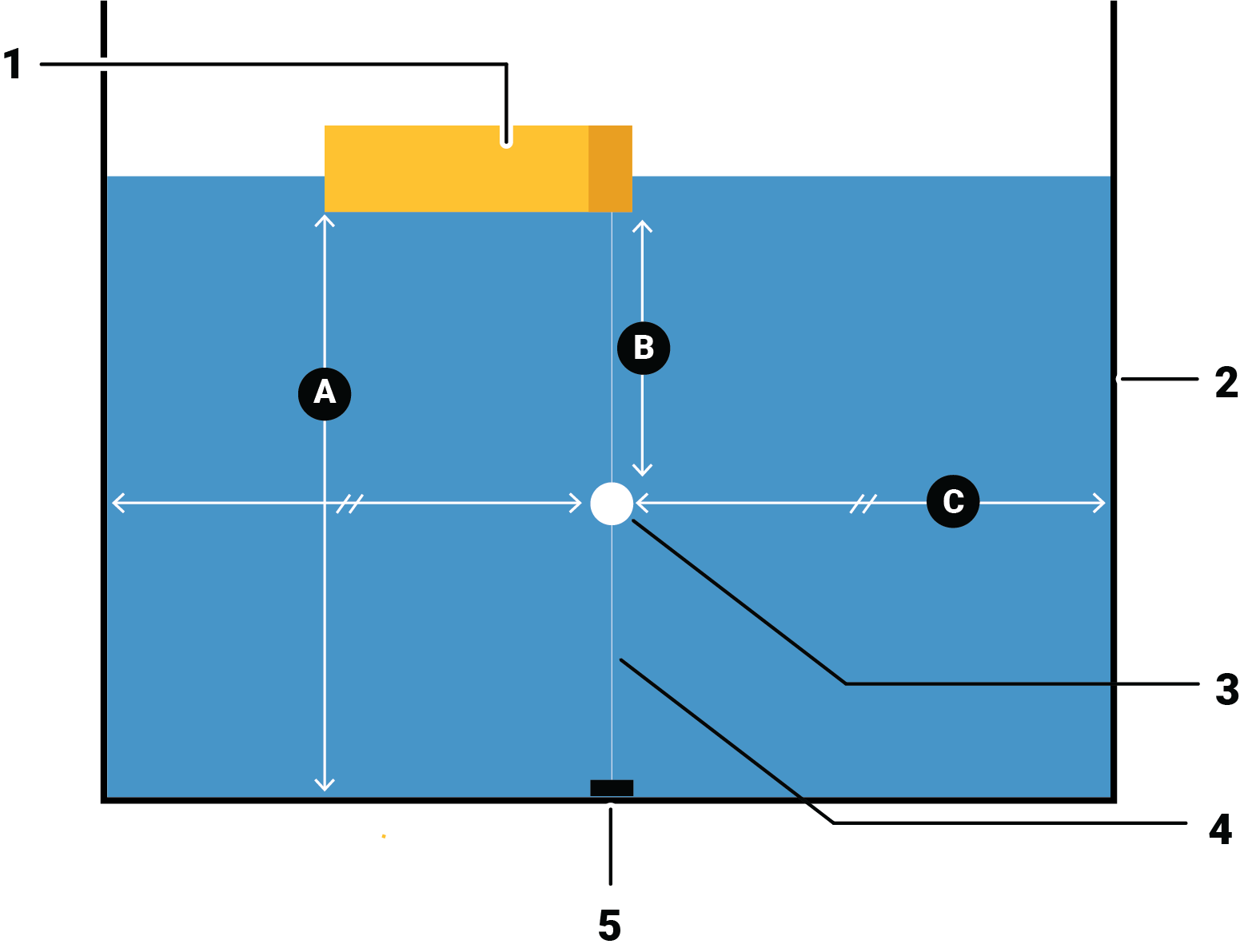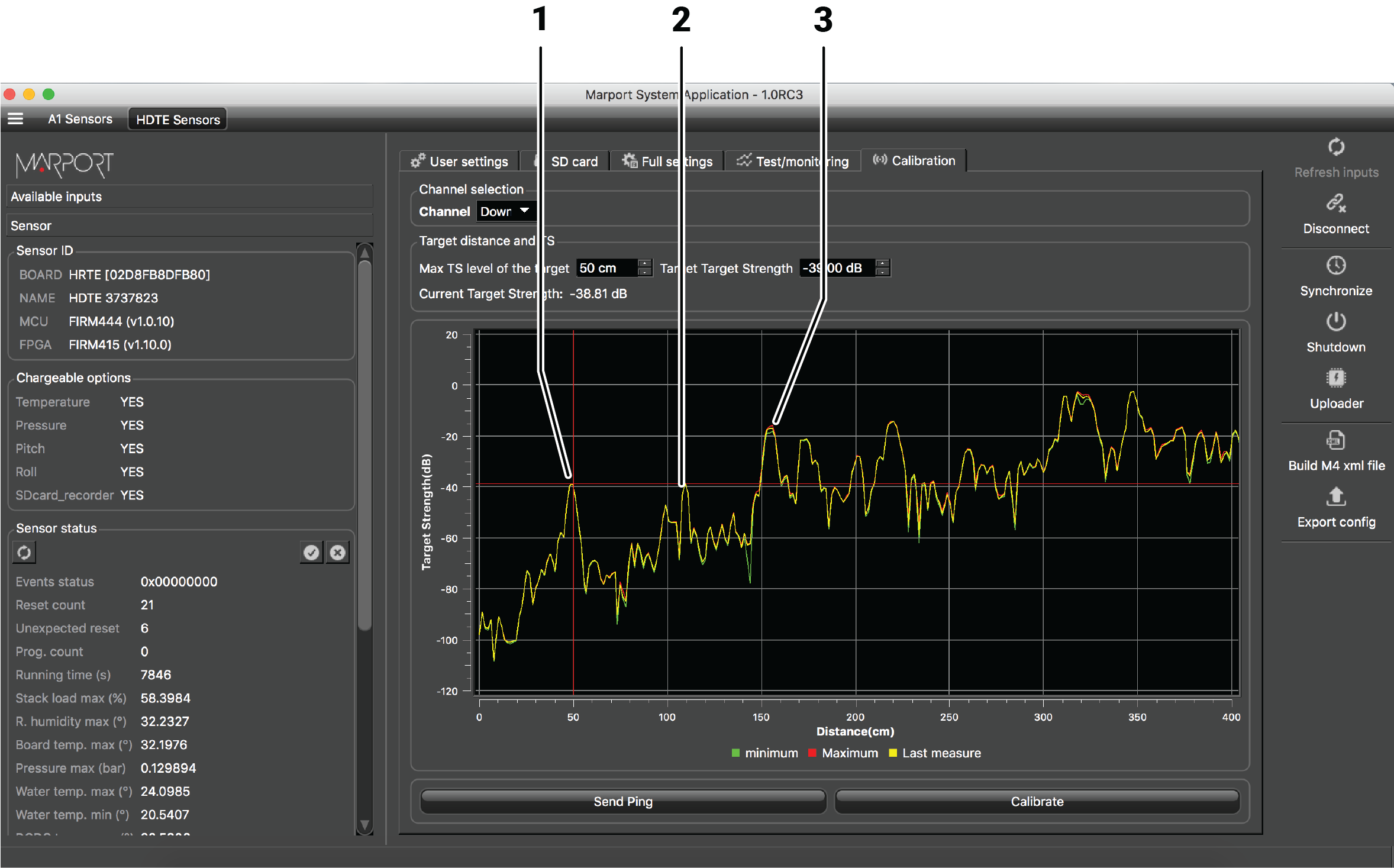Calibrating the Sensor for Target Strength Value
You need to calibrate the sensor to offset the variability of the sensor transducer and of sound transmission. The aim is to have all sensors displaying the same target strength value (echogram color) for a given target.
Before you begin
- Make sure you have correctly configured the sensor settings, especially the TVG mode, ping length and ping frequency.
- You can calibrate the sensor with or without the housing on.
The following settings need to be configured before calibration (if you change them afterwards, you need to calibrate the sensor again):
- Sounding mode
- Sounding frequency
The pulse length of the sounding does not impact the calibration, so you can still change the pulse length afterwards.
Procedure
-
Set up the following installation:

1. Sensor, half in water 2. Water tank
3. Ping pong ball
4. Fishing line
5. Counterweight
Recommended lengths A. Min. 150 cm.
B. Distance to target = 50 cm.
C. Min. 75 cm between ball and side walls.
The sensor communicates with Mosa2 via WiFi.
-
From Mosa2, click the tab Calibration.

- Select the channel you want to calibrate from Channel.
- Enter the distance to the target from Max TS level of the target. In this example, it is 50 cm (default setting).
- Check that the target strength is the one applicable to your target. In this example, it is -39 dB (target strength value of a ping pong ball of 39 mm diameter).). Change if different.
- Check from the Test/monitoring page that the pitch and roll of the HDTE is between - 5° and 5° to be sure that the beam direction of the sensor is vertical down.
-
From the bottom of the screen, click Send Ping to send
one ping that will identify the distance to the target.
A curve is displayed. A red horizontal line indicates the target strength and a vertical line indicates the distance. The crossing between the two lines should be at the top of the first curve, at the crossing between -39 dB and 50 cm. If not, click the vertical line and drag it to the top of the curve.
 1. Ping pong ball / 2.
Sidelobes (tank walls) / 3. Bottom
1. Ping pong ball / 2.
Sidelobes (tank walls) / 3. Bottom -
From the bottom of the screen, click Calibrate.
Note: If the sensor is not correctly placed, you may have an error message asking you to correct the pitch and/or roll angle.The sensor sends a series of 5 pings to calculate if the echo is consistent and constant. A new target strength offset is calculated. A dialog box appears to propose the new target strength offset.
-
From the dialog box, accept the new calibration settings.
The sensor sends again a series of 5 pings to check if the calibration settings are correct in comparison to the target strength set (e.g. -39 dB). If they are correct, calibration settings are saved.If calibration settings are not correct, restart the calibration procedure.Troubleshooting: If the sensor LEDs do not seem to work correctly right after the calibration procedure it is normal: calibrating influences LED display.